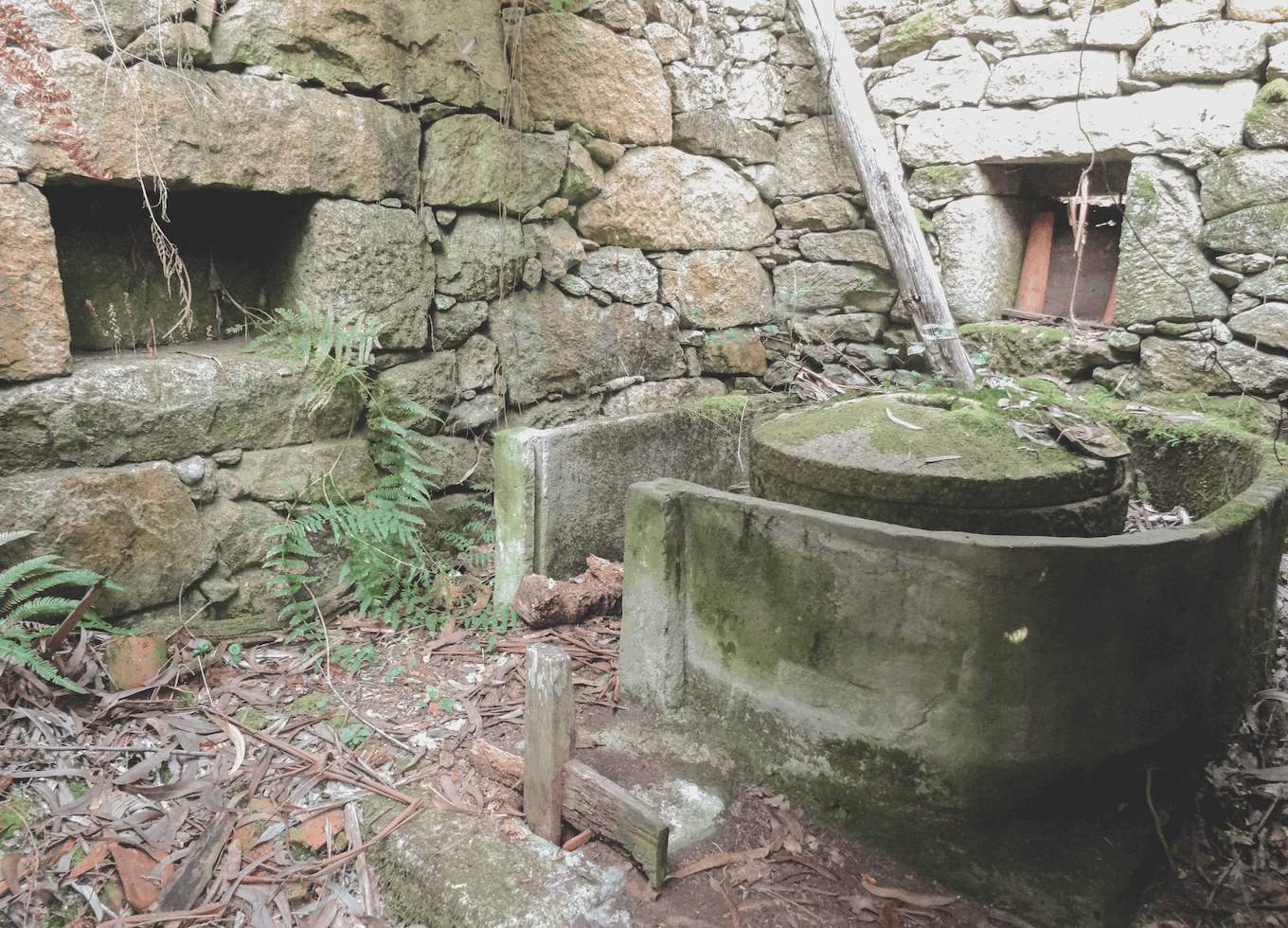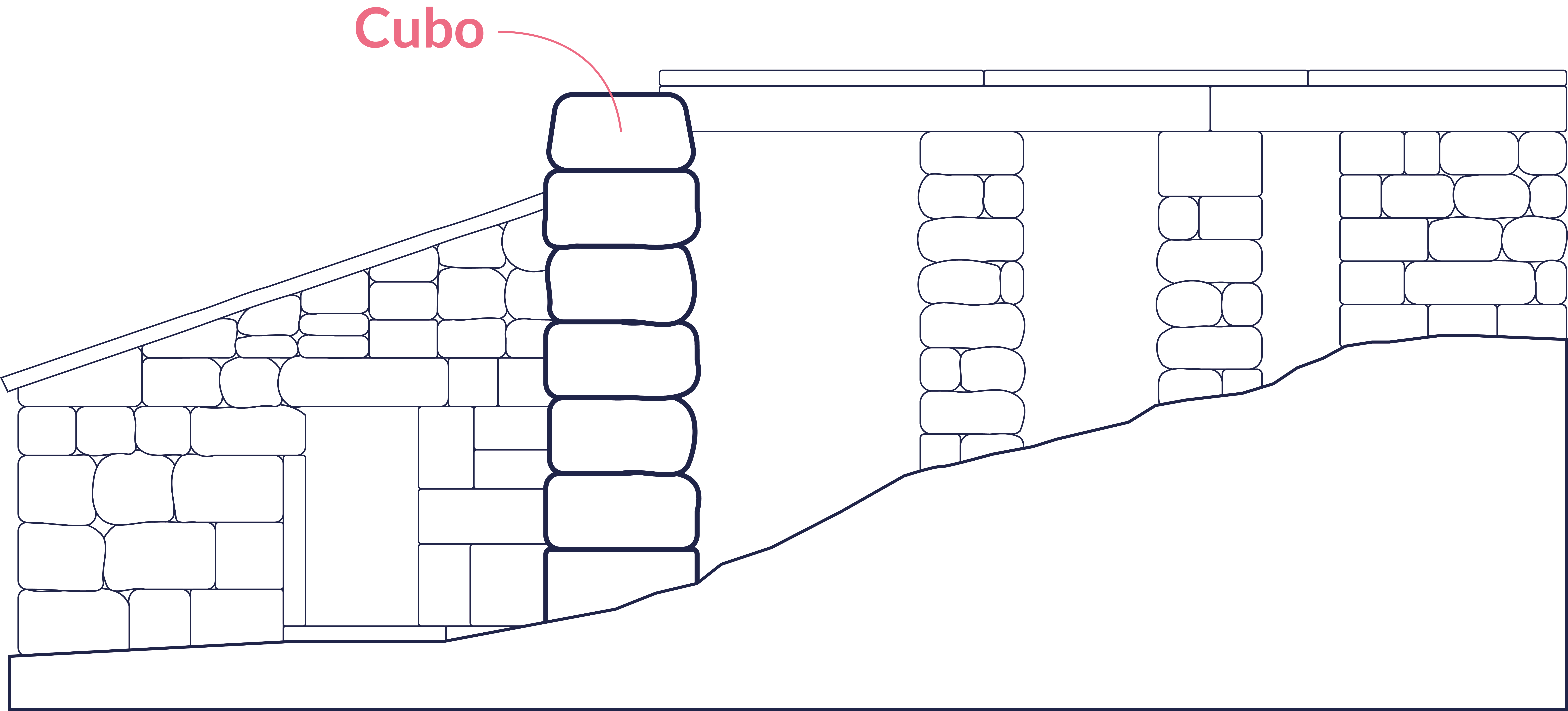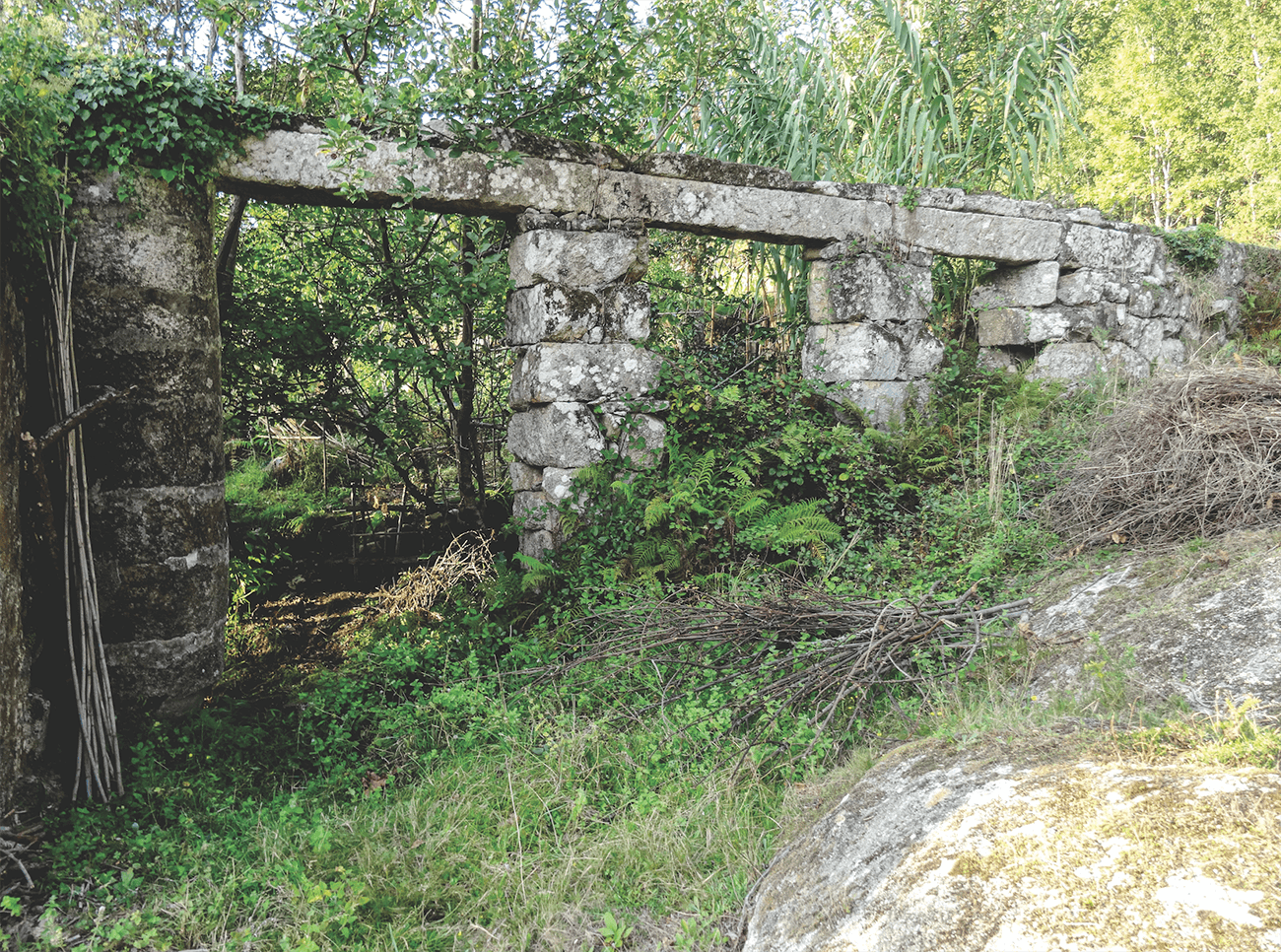Mills

The Muíño do Brasileiro is the only example in Taboexa that features a covered spillway with a pointed arch.
The most common type of mill in Taboexa is the hydraulic mill with a horizontal driving wheel or rodicio. The main characteristic of this type of mill is the mechanical system of rotation, based on a horizontal iron wheel called a rodicio or reducio. The outside of the rodicio has a variable number of paddles or penalties against which the water beats, giving rise to the rotary movement of an axle that drives the millstone, which allows the grain to be turned into flour.
Today, Taboexa has 27 mills located in the streams of Caneiro, Sargenta, Leiradiño, Sanrela, Hedreira, and Rubial.

Interior of the Armeiro Mill, with an open pantry in one of the walls.
The majority of these mills are inherited, meaning they are co-owned and shared in usage.

Exterior of the Armeiro Mill.

1901. Document for the distribution of grinding hours at the Water Dam Mill.
Taboexa in 1753
In the census of the Catastro of the Marquis of la Ensenada, it is stated that the parish had fourteen “black flour mills” owned privately. Of these, four were owned by religious individuals. Depending on the type of grain for which the mill was intended, the grinding stone varied: the black stone mills (lat. niger, black) or local stones were used for grinding corn, wheat, rye, and barley.
The list of mills existing at that time was as follows:
• Mill Behind the Church: owned by the parish priest Pedro Estévez. It ground with dam water for three months a year, which provided an income of about 40 reales of vellón.
• Altamira Mill: owned by the presbyter Martín Rodríguez. It ground with dam water for two months a year, translating to an income of 30 reales.
• Old Mill: owned by the widow Lucía Álvarez. It ground with dam water for two months and generated about 30 reales a year.
• Mouro Mill: owned by Bartholomé González Fortes. It ground with dam water for two months, and its profit was 30 reales annually.
• Mouro Mill: owned by Antonio Rodríguez. It ground with dam water for one month a year, obtaining about 15 reales.
• Mouro Mill: owned by Bartholomé Rodríguez Fortes. It ground with dam water for one month, and its profit was 15 reales.
• Mill in Rubial: owned by Cathalina Álvarez. It ground with dam water for one month a year, generating about 15 reales.
• Mill in Buraco: owned by Estevan Ignacio, “neighbor of the town of Rivadavia.” It ground with running water for four months, yielding an income of 50 reales a year.
• Mill in Cubo: owned by Andrés Álvarez from Outeiriño. It ground with running water for four months a year, resulting in a profit of 50 reales.
• Mill in Aldea: owned by Domingo Álvarez. It ground with running water for three months, thus obtaining about 40 reales annually.
• Mill in Aldea: owned by the presbyter Joseph Álvarez Freiría. It ground with running water for three months, so its profit was 40 reales.
• Mill in Aldea: owned by Juan Alonso. It ground with running water for two months, yielding about 30 reales a year.
• Mill in Aldea: owned by Pedro González. It ground with running water for two months a year, resulting in a profit of 30 reales.
• Mill in Poza Grande: owned by the presbyter Manuel Álvarez. It ground with running water for one month a year, obtaining about 15 reales.





 This is the most common type of watermill. Its main characteristic lies in the canal, through which water constantly circulates and flows directly to the inferno where the mill is located.
This is the most common type of watermill. Its main characteristic lies in the canal, through which water constantly circulates and flows directly to the inferno where the mill is located.

